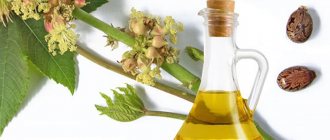Carrier oils are naturally derived from plant extracts and can be a great alternative to the chemicals found in most moisturizers on the market. The name "oil" may be a red flag for some women, especially those with oily skin, who may believe that applying oil will only cause breakouts and clogged pores.
Frankly, there are oils for all skin types, and you can easily create a DIY facial treatment tailored specifically to your needs.
How to make the perfect oil
It is very important to know which oil is right for your skin. While some can benefit all skin types, there are some that can help balance sebum production, reduce inflammation (redness) and fight acne-causing bacteria.
Depending on the season and climate you live in, you will need to change your oils to suit your skin's changing needs. With careful product selection, you can add essential oils to your base to create the perfect blend for your skin type. Once you mix your first facial oil, you will never want to use any other products.
Cosmetic oils: oil compositions, mixing, combination
You can MIX oils BY YOURSELF using any composition. BUT! It is important to remember that such a mixture should not have MORE than FIVE COMBINATIONS.
You can use them regularly or as needed. There are practically no contraindications (in rare cases, intolerance in the form of allergies). The best option is to use the course and add small quantities of cosmetic oils to your favorite creams, lotions, and body care liquids.
Oily care products
Dry and aging skin
Rosehip seed oil is an ultra-nourishing treatment that is ideal for dry or aging skin, especially those areas that show the first signs of aging, such as around the eyes. Rich in vitamins A, C and E, this oil has anti-inflammatory properties and promotes wound healing. It can be used alone or in combination with another product for optimal results.
Known for its skin rejuvenating properties, sweet almond oil is a soothing remedy rich in proteins, minerals and vitamin E. Almond oil is great for moisturizing dry skin.
Avocado oil is a everyone's favorite, ideal for aging skin and increasing collagen production. Avocado oil is rich in antioxidants, vitamins A, D and E and is known to improve skin elasticity.
Body oil recipe with ylang-ylang and vitamin E
Action: suitable for sensitive skin, moisturizes and tones. Regulates the functioning of the sebaceous glands and prevents premature aging of the skin. Eliminates skin irritation after sunbathing and helps maintain tan.
Components:
- 200 ml olive oil (Extra V)
- 32 drops ylang-ylang essential oil
- 10 drops vitamin E
Preparation: mix all ingredients in a glass bottle, seal the container tightly and shake. You can use the oil immediately.
Oily skin
Grapeseed oil is suitable if your skin has too much sebum, it is lightweight and can regulate oil production, calming any inflammation. It is also rich in antioxidants and vitamins E and C.
The money tree pleases with lush flowering: my secret is in caring for the leaves
If there is little snow, there will be no harvest: December 16 is Ivan the Silent Day
Why French children behave well: eight ways to raise them
Tamanu oil is suitable for oily and acne-prone skin and has antibacterial and anti-inflammatory effects. Ideal for acne-prone skin prone to blackheads.
Apricot oil has an antibacterial and anti-inflammatory effect.
Effect of vegetable oils on skin function
Vegetable oils have long been used for skin care for cosmetic and medical purposes, since they have a positive effect on physiological processes in the skin, are characterized by high bioavailability and act mainly locally without causing systemic effects [15]. Natural oils are used in many countries as part of newborn skin care, but there is little evidence-based research to support this practice. The question of using pure (edible) vegetable oil in the routine practice of skin care for newborns and children in the first year of life still remains open.
Vegetable oils are divided into essential and fatty. Studies have shown that almond, jojoba, soybean and avocado oils, when applied topically, mostly remain on the surface without penetrating deep into the skin. It is known that the application of natural oil can act as a protective barrier due to its occlusive effect, helping the skin retain moisture, resulting in a decrease in TPE. Although triglycerides do not penetrate deeply into the stratum corneum, glycerin promotes hydration. FFAs, especially monounsaturated fatty acids such as oleic acid, can disrupt the skin barrier and increase skin permeability to other compounds present in plant oils [16]. Other components, such as phenolic compounds and tocopherols, have antioxidant effects and may influence skin barrier homeostasis, inflammation and wound healing [17, 18].
Experimental studies have shown that phospholipids contained in vegetable oils increase skin permeability, have an anti-inflammatory effect by regulating covalently bound ω-hydroxyceramides in the epidermis and reducing the expression of regulated chemokine activation genes and thymic stromal lymphopoietin [19, 20].
In many countries, olive oil, sunflower seed oil and other vegetable fatty oils are used in routine skin care practices for newborns and infants. In South Asia and sub-Saharan Africa, various plant oils are traditionally used as topical emollients, for example, readily available mustard seed oil is widely used for its emollient, warming effect and aroma, but it can be toxic to skin keratinocytes, as the same as pure olive oil [21–23]. In maternity wards and neonatal intensive care units in the UK, olive oil is often used as a skin emollient [24].
Olive oil has been used for skin care since ancient Egypt, and although this skin care product has become popular in many countries, only a small number of studies have been published demonstrating its emollient effects [25–28].
Randomized controlled trials have shown that, unlike sunflower oil, olive oil, whose predominant component is oleic acid, significantly damages the skin barrier and therefore may contribute to the development of dermatitis and aggravate existing atopic dermatitis. In this regard, it is not recommended to use pure olive oil to soften dry skin and for massage in infants, but this does not apply to cosmetics, including children's, that contain olive oil [28].
A. Cooke et al. [29], who conducted a blinded randomized controlled trial on healthy full-term newborns, stratified by family history of atopic eczema, showed that olive oil and sunflower oil equally improved skin hydration, but did not affect the structure of the intercellular plates, pH, TPE and the severity of skin erythema according to compared with a group of children who did not use oil. The study was not clinically significant, but until further research is conducted, oils should be recommended for newborn skin care with caution. Although there is conflicting clinical evidence regarding the benefits of olive oil as an emollient, laboratory studies suggest that it may be harmful due to its main component, oleic acid, which increases skin permeability by reducing the conformational order of stratum corneum lipids and causing lipid phase separation [ thirty]. Oleic acid can also induce inflammation through N-methyl-D-aspartic acid receptors in keratinocytes. Molecular inhibitors of these receptors reduce EPT caused by application of oleic acid to the skin of mice [31].
In vitro studies
confirm that olive oil and oleic acid have virtually no antibacterial effect, although there is evidence that olive oil, containing in particular the antioxidant hydroxytyrosol, has antifungal activity [26]. However, its use in certain skin conditions, such as seborrheic dermatitis, should be approached with caution because olive oil contains saturated and unsaturated fatty acids, which can stimulate the growth of certain types of fungi and induce inflammation [32]. It is also important to consider the risk of allergic contact dermatitis caused by olive oil [33].
In recent years, coconut oil, which contains large amounts of lauric acid, which has antimicrobial and anti-inflammatory effects, has become increasingly popular [34]. Monolaurin, a monoglyceride derived from lauric acid, exhibits antimicrobial activity by disrupting the lipid membrane of bacteria, including Propionibacterium acnes
,
Staphylococcus aureus
and
Staphylococcus epidermidis, Pseudomonas aeruginosa, Escherichia coli, Proteus vulgaris
and
Bacillus subtilis
[35]. Cell culture studies have also shown that monolaurin exhibits antiviral and antifungal activity [36].
Coconut oil has been shown to have beneficial effects on the skin barrier in newborns and adults. A randomized, blinded study found that use of coconut oil during the first seven days of life in preterm infants reduced TLE by almost 50% compared to infants whose skin was not treated with oil, confirming the effectiveness of coconut oil as an emollient [37]. . MTP Evangelista et al. [38] when using coconut oil and mineral oil for skin treatment in children found a statistically significantly lower TTE and Scoring Atopic Dermatitis (SCORAD) scores in the coconut oil group than in the mineral oil group, which also confirms the effectiveness of the former.
Sunflower oil contains oleic, palmitic, stearic, linolenic and linoleic acids, the share of the latter reaching 60%. It has been proven that linoleic acid is essential for maintaining normal barrier function of the epidermis. Skin inflammation is modulated by the conversion of linoleic acid to arachidonic acid, a precursor to prostaglandin E2. According to a randomized controlled trial of petrolatum and sunflower oil in newborns and infants conducted in Bangladesh, the oils' putative anti-inflammatory effects and improved skin barrier properties are associated with reduced mortality in preterm infants due to their lower likelihood of developing nosocomial infections [39]. In another prospective randomized study of sunflower oil on the skin of premature infants, V. Kanti et al. [40] found higher levels of TEJ than in the control group, indicating a disruption of the skin barrier, although the authors noted that all indicators remained within the range of values previously described in healthy preterm and full-term infants after birth.
Studies of the effect of natural oils and the synthetic emollient Aquaphor on the function of the epidermal barrier in mice showed that mustard seed oil has a harmful effect on the epidermal barrier, while sunflower oil and Aquaphor, on the contrary, significantly accelerate the recovery of the epidermis [21, 41]. Clinical studies [39, 40] found that massage using sunflower oil leads to a 41% reduction in the incidence of sepsis in newborns and infants and a 26% reduction in mortality compared to the control group. This finding highlights the potential of inexpensive, culturally appropriate alternatives to the traditional mustard seed oil for skin care of low birth weight preterm infants in South Asia. The Disease Control Priorities in Developing Countries Project (DCP2) has identified emollient research as a global priority [42].
Essential oils are volatile, with a characteristic strong odor and taste, oil-like (oily), insoluble in water, mostly colorless or slightly colored liquids that evaporate already at room temperature. Essential oils are formed in plants, so they are distinguished by the type of plant from which they are obtained (mint, lavender, rose, etc.). Essential oils are a mixture of several individual chemical compounds - terpenes and their derivatives (terpenoids), which are hydrocarbons and are characterized by the fact that their molecules contain many unsaturated carbon bonds, which determine the high chemical activity of these substances. Most essential oils are highly soluble in alcohol, lipids and fatty oils, waxes and other lipophilic substances and in this form are very widely used in perfumery, the food industry, medicine, and also in everyday life to improve physical and psychological well-being. Essential oils are well absorbed through the skin and affect the olfactory system, which is why they are most often used topically or in the form of inhalation. For topical use, such as massage, it is usually recommended to add fatty oils to the essential oil. The most commonly used essential oils for therapeutic purposes are lavender, eucalyptus, rosemary, chamomile and peppermint, although essential oils from more than forty plants are known throughout the world. Essential oils currently available for medicinal use are generally considered safe by the U.S. Food and Drug Administration (FDA). For children, and especially newborns, there are no uniform recommendations for the use of essential oils, taking into account their effectiveness and safety. The American Association of Naturopathic Physicians generally does not recommend the use of essential oils in children under 3 months of age. life, however, this opinion is not confirmed by scientific research [43].
It should be emphasized that there are few but high-quality empirical reviews that have examined the effectiveness of the use of essential oils for pain relief, including in children [44]. Many studies examining the use of aromatherapy for pain management have focused on therapeutic massage, making the isolated effects of essential oils without massage unclear.
N. Goubet et al. [45] used lavender aromatherapy to relieve pain associated with blood draws in infants and showed that these infants calmed down more quickly than those who did not receive lavender aromatherapy [45]. Other researchers, comparing the effects of amniotic fluid, breast milk, distilled water, and lavender odors on the reduction of Neonatal Pain Scale (NIPS) pain during heel sampling, have also shown that lavender and breast milk odors prevent increased heart rate, a decrease in hemoglobin oxygen saturation (saturation) and reduce pain during invasive procedures in newborns to a greater extent than amniotic fluid or distilled water [46].
Children receiving treatment for serious illnesses often experience stress that is not directly related to their illness, so a holistic approach to care is an integral part of treatment [47]. Massage with lavender oil was effective in reducing symptoms of colic in full-term infants aged 2 to 6 weeks. [48–50].
Essential oils and their aromatic compounds are a very important ingredient in the perfume and cosmetics industry, in particular in skin care products for newborns and young children. Currently, a unified standard for certification of natural cosmetics has been created, and in 2010, the international non-profit organization COSMOS-standart AISBL was created. There is also a Unified European certification system for natural and organic cosmetics - NaTrue (www.natrue.org), according to which there are three levels of natural cosmetics: natural cosmetics, natural cosmetics with organic components and organic cosmetics. NaTrue has developed a unified approach to certification of products of any cosmetics manufacturer, as well as a common assessment system for all European consumers. The main task of NaTrue is to determine the quality of produced natural cosmetics according to its own system of standards. According to the NaTrue standard, natural cosmetics
must contain natural ingredients (but not necessarily organic origin).
In the process of obtaining and processing raw materials, exclusively gentle technologies must be used, and depending on the category of the cosmetic product, the maximum and minimum content of certain components in it must be strictly regulated. Products classified as natural cosmetics with the addition of an organic part
must contain at least 70% natural ingredients grown in environmentally friendly farms or collected in ecologically clean areas, as well as at least 15% natural substances not modified by chemical processes, and no more than 15% components identical to natural ones.
Organic cosmetics
Characterized by the highest content of chemically unmodified natural substances, at least 95% of natural ingredients must be grown in environmentally friendly conditions. The use of only natural preservatives is allowed, while the use of petrochemical products or other synthetic products, such as mineral oils, is prohibited.
Normal or combination skin
Jojoba oil is also popular. Almost all skin types can benefit from it and it leaves the skin feeling hydrated without being too shiny. Can be used for inflammatory diseases and helps with aging. It can also be used all over the body and is very similar to the oil that is naturally produced by our skin.
Coconut oil is easy to find. It remains a favorite choice for many. High in antioxidants and vitamin E, coconut oil can also be used on the face and body as a cleanser or moisturizer. Has natural antibacterial properties. However, coconut oil may cause skin rashes in some people.
Sunflower oil is an excellent choice for normal skin, providing hydration and balancing oil production. Improves restoration of the natural skin barrier.
A Brazilian travels 36 km by bike every day to take his loved one home.
“We are still friends”: Derevianko commented on the breakup with his wife
Smooth and fresh skin: dermaplaning, or why a woman needs to shave her face
How to use facial oil correctly
Here are some tips for further guidance.
Use twice daily. Apply facial oil morning and evening. Some experts warn that facial oil can interfere with sunscreen, causing it to melt and become less effective.
But if you don't spend a lot of time outside, this shouldn't be a problem. Just use the oil on days when you need powerful sun protection, and it shouldn't reduce your SPF too much.
Face oil is applied last, but before sunscreen. Cleanse skin and apply serums as usual. Then - face oil, then - sunscreen.
Pat the skin, do not stretch it. Apply a few drops to your fingertips (more is not always better) and pat gently over your face, neck and chest.
Avoid the eye area. If you have sensitive eyes, always use serums and creams formulated specifically for the eye area rather than oils.
Do you need facial oil?
If you have naturally hydrated, evenly dewy skin, you may want to skip the facial oil. But if you suffer from acne, dryness, or excess oil production, using a facial oil can help balance your skin, unclog pores, and maybe even relieve irritation.
If you're concerned about clogged pores, start with jojoba oil, which should be very similar to the sebum your body naturally produces.











